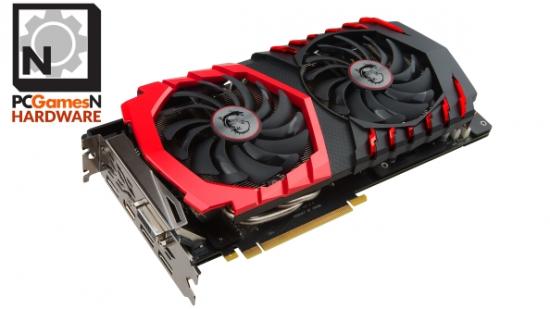Nvidia’s mainstream Pascal card is out now, but it’s the custom boards you want, not the pricey ol’ Founders Edition.
Read more: check out our full in-depth review of the Nvidia GTX 1060 Founders Edition.
The MSI GTX 1060 Gaming X 6G is the first non-reference model of Nvidia’s new mid-ranger we’ve had a chance to test. But with the green team jealously holding onto the Founders Edition cards, only selling them through their own GeForce store, every card you’ll find out on the e-shelves will be a custom design like this.
And that’s no bad thing. It means you’ll either find factory-overclocked cards, with chillier and quieter-running coolers, with improved gaming performance, for only a little more than the Founders versions, or significantly cheaper models, still rocking third-party cooling, and delivering the same speeds in-game as the reference cards.
If you’re an impatient sort, click below to be taken directly to architecture info, our benchmark data, and that all-important out-of-10 score:
MSI GTX 1060 Gaming X 6G specs
What have we got here then? This MSI is one of the former options; a potentially seriously overclocked – and overclockable – card with an outstanding cooler strapped to the mainstream Pascal GPU at its heart. That does mean it’s also more expensive than the Founders Edition, with a street price of $353 (£290) right now.
Like the Founders Edition this version of Nvidia’s GTX 1060 comes with the same configuration of the GP106 silicon, with 6GB VRAM running across an aggregated 192-bit memory interface. We’ve gone into greater detail in our full Nvidia GTX 1060 review, so if you want some extra homework check out the Pascal GP106 architecture in depth there. Where you’ll find a difference in the reference/Founders silicon, however, is where MSI have gone to town on the clockspeed.
The GTX 1060 Gaming X comes with a selection of different modes you can select from within the MSI Gaming App software. There’s a Silent mode, a Gaming mode and an OC mode. Each step comes with a change in GPU base and boost clockspeed. In Silent mode, the chip will run at the reference card’s 1,708MHz average boost, Gaming nets you 1,784MHz and the OC mode is set to hit 1,809MHz.
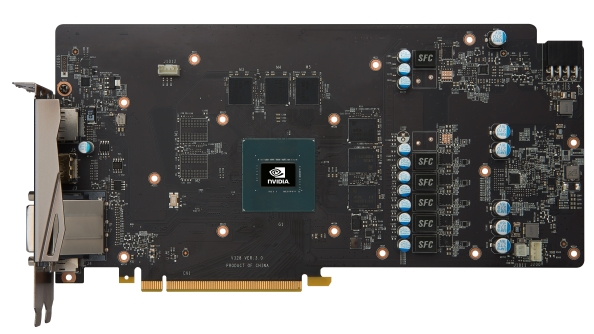
To help the card manage both the extra GPU load brought on by the Gaming and OC modes, as well as the pressure of having a mode called ‘Silent’, MSI have attached their impressive dual-fan Twin Frozr cooling array to the Gaming X 6G. They’ve also redesigned the PCB for this factory-overclocked model, lengthening it compared with the reference model design in order to spread out the cooling across its full breadth. On top of that, MSI have added their ‘Military Class’ components to the 10-phase power array and jammed an 8-pin PCIe power connector on the side to let it draw more juice from the PSU as needed. The standard 6-pin design can deliver 75W from the PSU directly to the card, while an 8-pin plug doubles that to 150W.
It is an overclocked graphics card after all, and we all know they needs MOAR POWERS.
MSI GTX 1060 Gaming X 6G benchmarks



MSI GTX 1060 Gaming X 6G performance
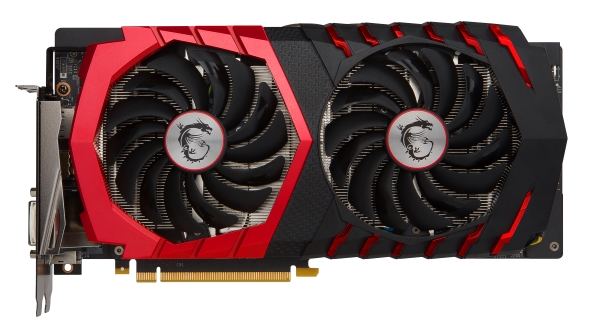
We’ve run our full testing suite – on the brand new Skylake-based PCGamesN test rig – with the MSI GTX 1060 Gaming X 6G operating in its OC mode to see just how far this version of Nvidia’s mainstream Pascal card will go. And it just runs and runs.
Remember MSI’s specified clockspeeds for the different GPU modes? Yeah, those are some seriously conservative estimates. In Silent mode alone the MSI card was hitting 1,885MHz – higher than the Founders Edition – while in OC mode it would flirt with GPU speeds over the 2GHz mark. Though admittedly only very occasionally.
All that while still keeping the GPU around 64°C. Considering the fans don’t get out of bed for temperatures lower than that, in general desktop usage your powerful graphics card isn’t going to be making any noise at all. And this isn’t me testing cards in a glacial, air-conditioned office – we’re in a British version of a heatwave here and there are beads of sweat actually forming on my eyeballs as I benchmark.
Even when they do start spinning up there’s none of that old school turbine whine you might have experienced with blower coolers because the fans hardly bother even getting up to 40% of their maximum RPM under full GPU load. The Twin Frozr array is a truly excellent cooling solution on all fronts.
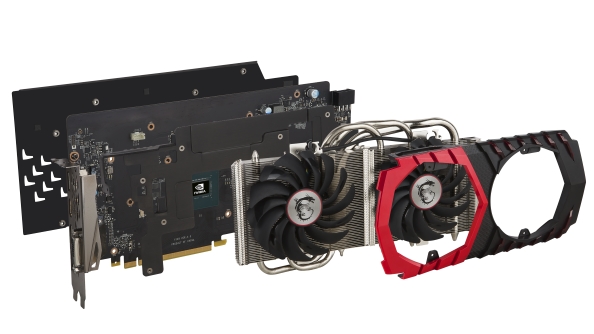
But what about the actual gaming performance? That’s where these factory-overclocked cards often struggle to justify their high price premiums, especially when the reference chips have so much headroom in them. In my testing I only really saw a few frames per second difference between the MSI GTX 1060 Gaming X and the Nvidia reference model, at best.
So if you were just picking up the Gaming X version to sit at its out-of-the-box clocks then you’re just paying that extra cash for a card that’s only a touch quicker, though admittedly does have the cool ‘n’ quiet chops a lot of us are after from their graphics cards.
But this sort of high-end card really comes into its own when you want to get your hands dirty overclocking it. I’m no pro-OC dude with a penchant for bathing in LN2 while sipping liquid helium through a straw – those guys don’t live long… But still without getting caught up in voltage tweaking chicanery I was able to push the GP106 at the heart of this card up to 2,126MHz and the memory up from an effective 8,000MHz to 9,360MHz. In-game that was netting a 12% boost in average frame rate over MSI’s own high-clocked OC mode.
MSI GTX 1060 Gaming X 6G verdict
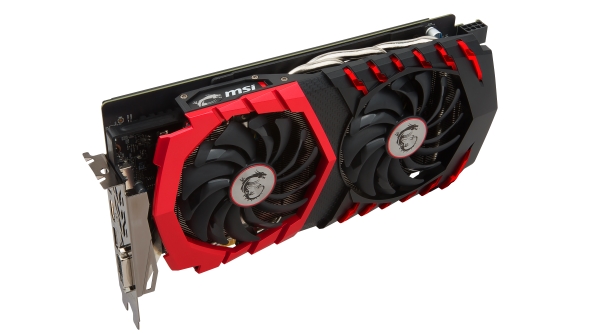
Essentially then, if you’re only really interested in letting MSI do the legwork clocking your GPU, all you’re getting with such an expensive graphics card is some impressive cooling and only a very slight performance boost over a stock-clocked version. That alone is not enough to justify the extra premium a card like the GTX 1060 Gaming X 6G demands.
What it does do, however, is give you an excellent platform if you want to take things even further yourself and get involved in some serious overclocking. There is already significant headroom in the GP106 silicon and the 150W made available through the 8-pin PCIe power connection upgrade, coupled with the improved power componentry on the PCB itself, means the Gaming X has a lot of room to grow, if you know what you’re doing with it.
The MSI GTX 1060 Gaming X 6G is a really well-designed and impressively specced-out card, offering the enthusiast a mid-range model to get stuck into. The engineering efforts MSI have gone to in creating this overclocking platform are first class. From the robust replacement capacitors, to the extra power phases, extended PCB and rigid backplate, we’re getting on for as good as you’re going to see from a retail GTX 1060.
For most of us such a factory-overclocked card at least partly negates the value proposition Nvidia’s GTX 1060 offers the consumer, but that’s always been the problem with the premium, boosted options. And when even a reference card can be overclocked north of 2GHz, the ~$250 (£250) cards are really where the mainstream Pascal is going to shine.
